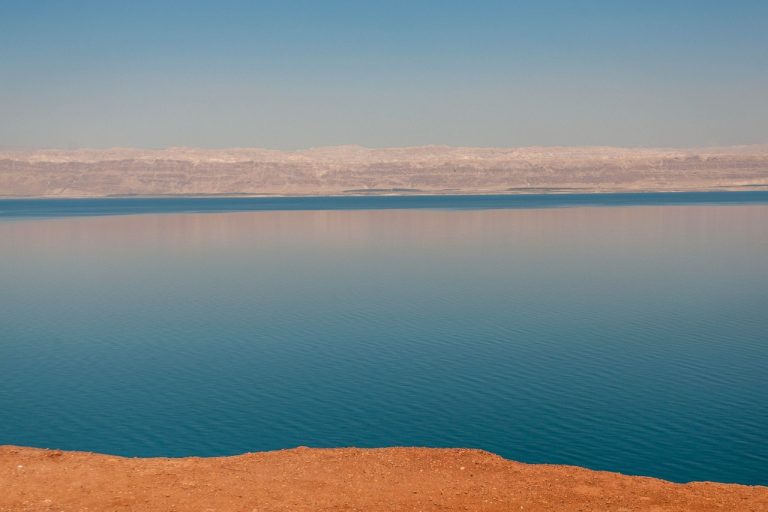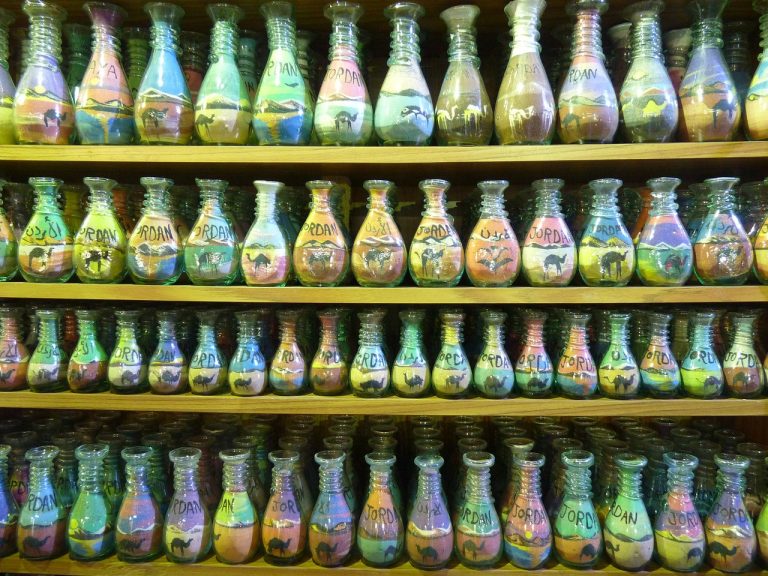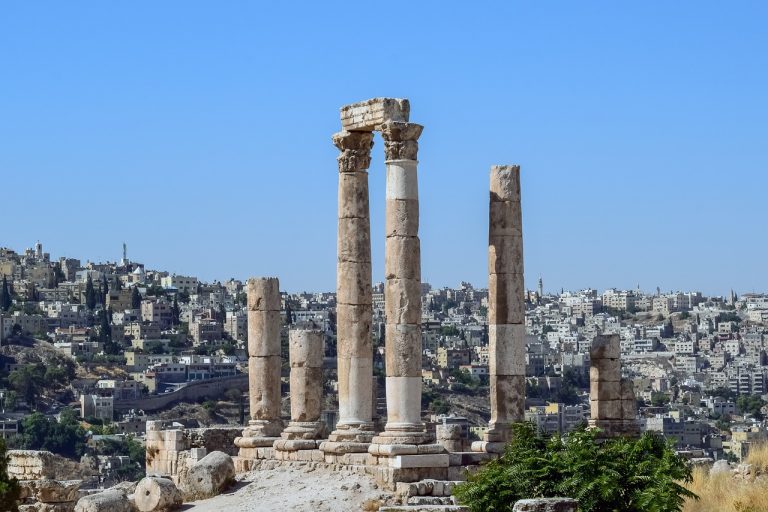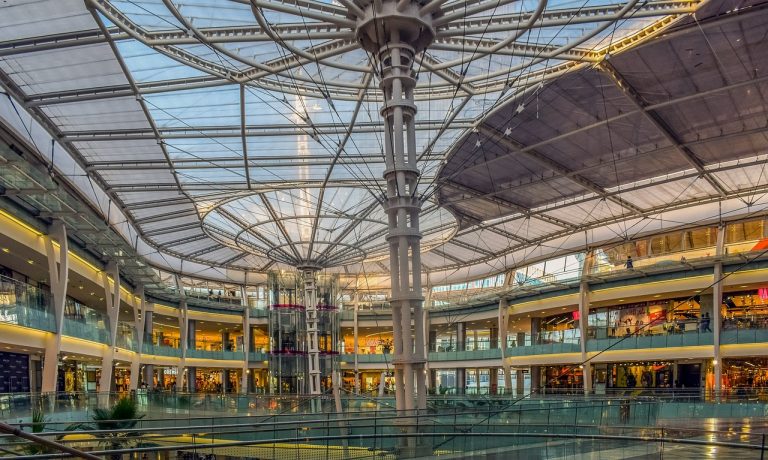Amman Jordan Video
Amman, the capital city of Jordan, is a place rich in history and culture. In this article, we will take a deep dive into the historical landmarks of Amman and explore the stories behind these iconic sites. From ancient ruins to magnificent architectural wonders, Amman offers a fascinating glimpse into the past.
The Citadel
The Citadel is a historic site located on the highest hill in Amman. It is home to several ancient structures, including the Temple of Hercules, Umayyad Palace, and the Byzantine Church. The Temple of Hercules, built during the Roman period, was dedicated to the mythological hero. The Umayyad Palace dates back to the 8th century and showcases intricate architectural details. The Byzantine Church, on the other hand, offers a glimpse into the early Christian era in Amman. The Citadel provides breathtaking panoramic views of the city and is a must-visit for history enthusiasts.
- Temple of Hercules: The temple was constructed during the Roman period and is dedicated to Hercules, the mythological hero.
- Umayyad Palace: Built in the 8th century, the palace displays impressive architectural features and provides insights into the Umayyad dynasty.
- Byzantine Church: This church showcases the early Christian era in Amman and features intricate mosaics and frescoes.
Amman Jordan Image 1: 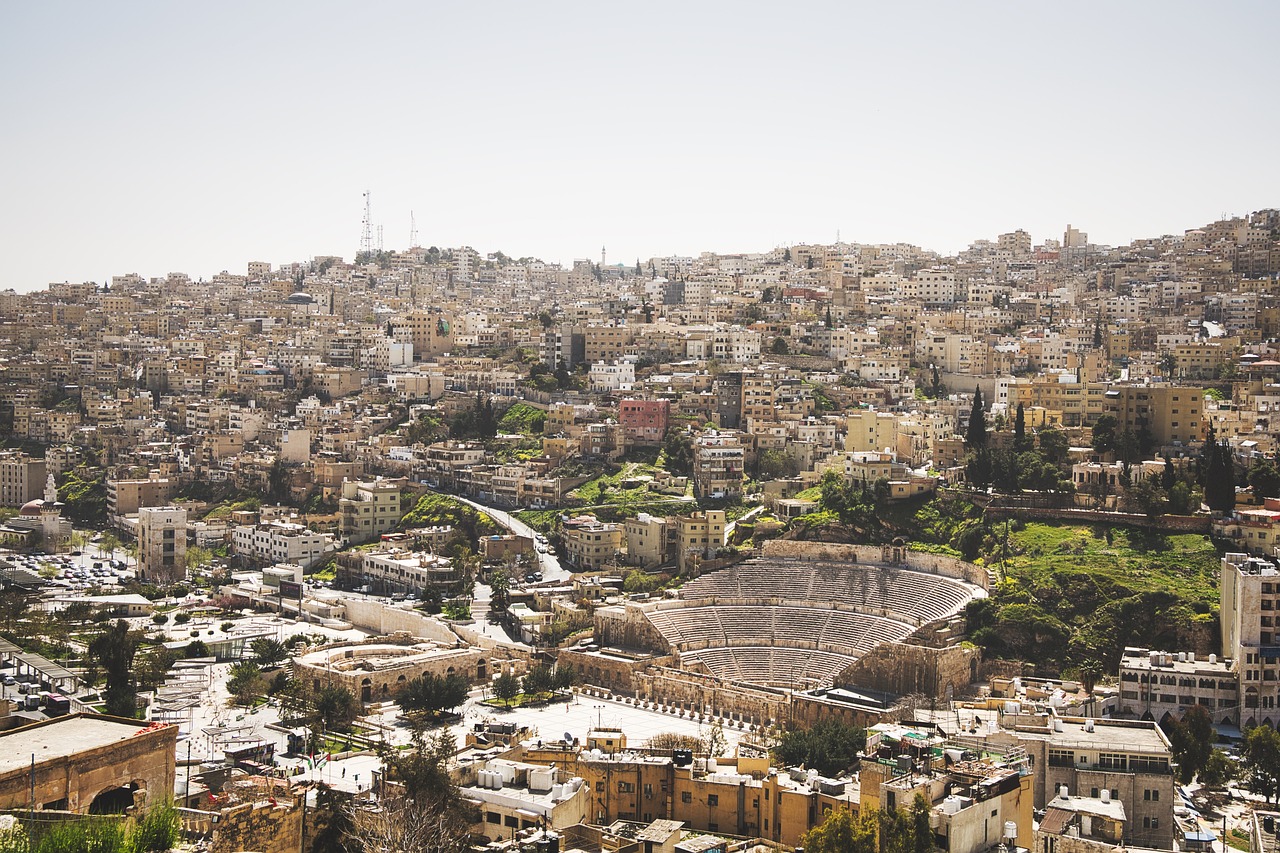
Roman Theater
The Roman Theater is an iconic landmark in Amman, dating back to the 2nd century AD. It was built during the reign of Emperor Antoninus Pius and can accommodate up to 6,000 spectators. The theater is renowned for its impressive acoustics and hosts various cultural events and performances. The site also includes the Odeon, a smaller theater used for musical performances during ancient times. The Roman Theater is a testament to the city’s Roman heritage and is a popular tourist attraction.
- Historical Significance: The Roman Theater was built in the 2nd century AD and showcases Amman’s Roman heritage.
- Acoustics: The theater is known for its excellent acoustics, making it an ideal venue for cultural events and performances.
- Odeon: The Odeon, located nearby, served as a smaller theater for musical performances during ancient times.
Jabal al-Qal’a
Jabal al-Qal’a, also known as the Amman Citadel, is a historic hill in downtown Amman. It houses the ruins of the Temple of Hercules, the Umayyad Palace, and the Byzantine Church. The site offers a glimpse into the city’s ancient history and provides stunning views of the surrounding area. Visitors can explore the archaeological remains and learn about the different civilizations that once thrived in Amman.
- Archaeological Remains: Jabal al-Qal’a is home to various archaeological remains, including the Temple of Hercules and the Umayyad Palace.
- Historical Significance: The site showcases the rich history of Amman and the civilizations that once inhabited the area.
- Scenic Views: Visitors can enjoy panoramic views of Amman from the top of Jabal al-Qal’a.
Amman Jordan Image 2: 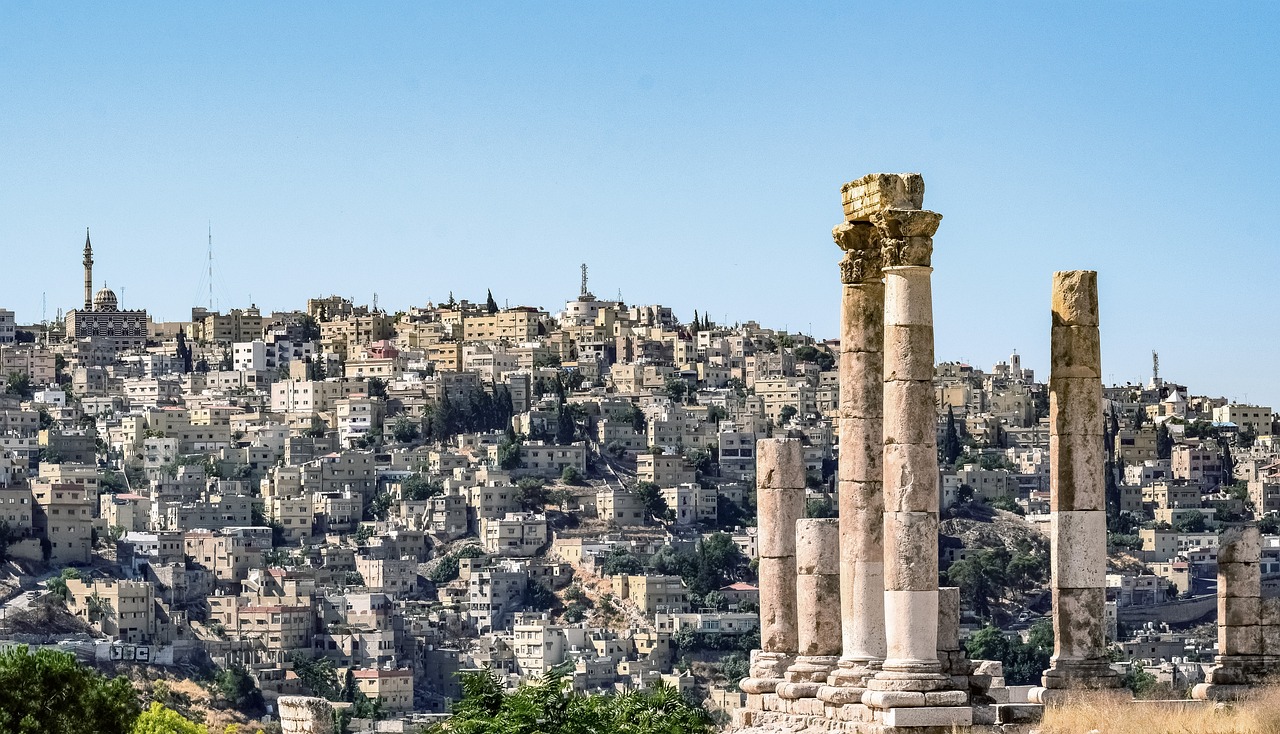
Rainbow Street
Rainbow Street is a vibrant and bustling street in Amman known for its unique blend of traditional and modern attractions. It is lined with cafes, restaurants, art galleries, and boutique shops, offering visitors a taste of Amman’s contemporary culture. Rainbow Street is also home to historical buildings and landmarks, such as the Roman Theater and the Duke’s Diwan. Exploring this lively street is a great way to soak up the local atmosphere and indulge in delicious cuisine.
- Cafes and Restaurants: Rainbow Street is filled with cafes and restaurants that offer a variety of cuisines, from traditional Jordanian dishes to international flavors.
- Art Galleries: The street is dotted with art galleries that showcase the works of local and international artists.
- Boutique Shops: Visitors can browse through boutique shops selling unique fashion items, handicrafts, and souvenirs.
Amman Citadel Museum
The Amman Citadel Museum is located within the Citadel complex and houses a collection of artifacts from different periods of Amman’s history. The museum provides insights into the various civilizations that have influenced the city, including the Roman, Byzantine, and Umayyad periods. Visitors can explore the exhibits and learn about the cultural heritage of Amman through the displayed artifacts, including pottery, jewelry, and statues.
- Artifact Collection: The museum showcases a diverse collection of artifacts from different historical periods.
- Cultural Heritage: Visitors can learn about the cultural heritage of Amman and the civilizations that have shaped the city.
- Interactive Displays: The museum offers interactive displays and multimedia presentations to enhance the visitor experience.
King Abdullah I Mosque
The King Abdullah I Mosque, also known as the Blue Mosque, is a prominent religious landmark in Amman. It was built in the late 1980s as a tribute to King Abdullah I, the founder of modern Jordan. The mosque’s distinctive blue dome and minarets make it a recognizable symbol of the city. Visitors can admire the mosque’s impressive architecture and explore its peaceful interior, adorned with intricate mosaics and calligraphy.
- Architectural Beauty: The mosque features stunning architecture, including a striking blue dome and minarets.
- Religious Significance: The mosque serves as a place of worship for Muslims and honors the memory of King Abdullah I.
- Interior Decorations: Visitors can appreciate the intricate mosaics and calligraphy that adorn the mosque’s interior.
Amman Jordan Image 3: 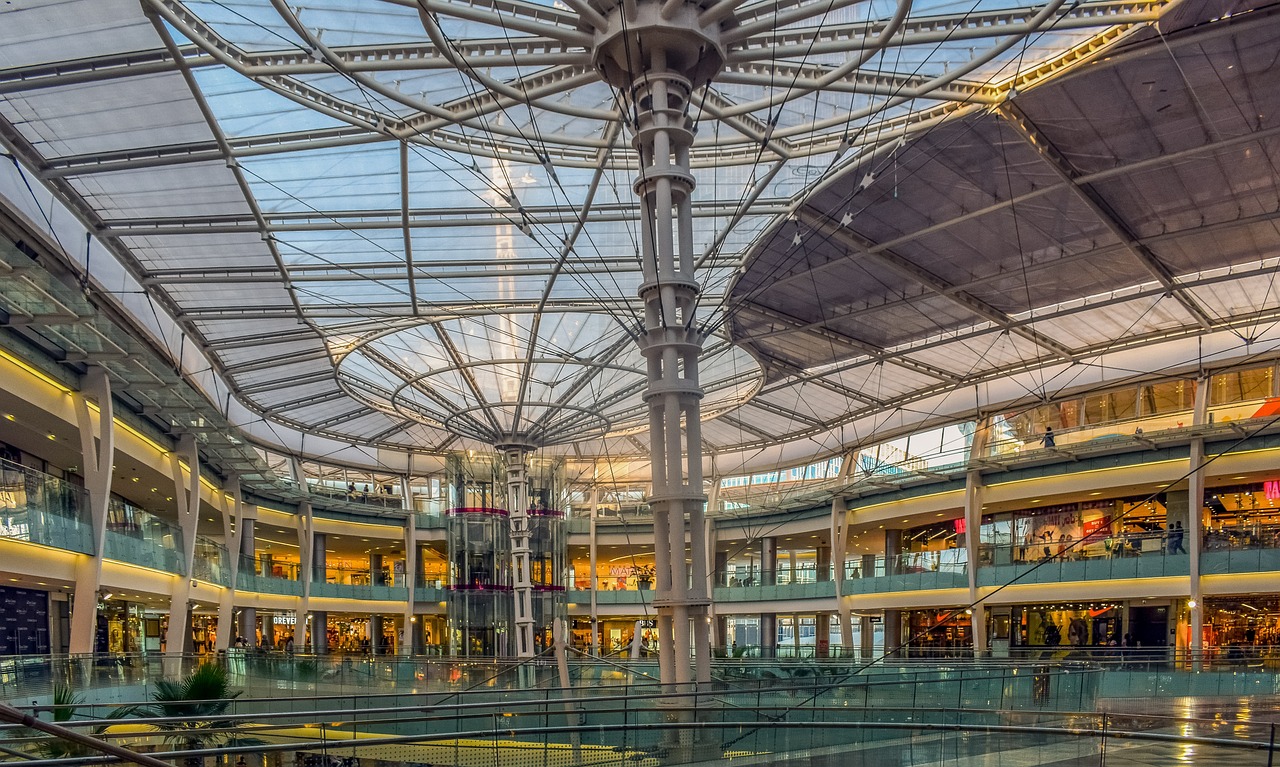
Jordan Archaeological Museum
The Jordan Archaeological Museum is located in the heart of Amman and houses a vast collection of artifacts from archaeological sites across Jordan. The museum showcases the country’s rich history, from prehistoric times to the Islamic period. Visitors can explore the exhibits and learn about the ancient civilizations that once thrived in the region, including the Nabateans, Romans, and Byzantines. The museum’s collection includes pottery, sculptures, mosaics, and ancient coins.
- Artifact Collection: The museum boasts a diverse collection of artifacts from different historical periods.
- Ancient Civilizations: Visitors can gain insights into the ancient civilizations that have shaped Jordan’s history.
- Prehistoric to Islamic Periods: The museum covers a wide range of historical periods, providing a comprehensive overview of Jordan’s past.
Amman Citadel Viewpoint
The Amman Citadel Viewpoint offers a stunning panoramic view of the city. Located within the Citadel complex, the viewpoint provides a breathtaking vista of the surrounding landscape, including the modern cityscape and the historic landmarks. Visitors can capture memorable photographs and appreciate the beauty of Amman from this vantage point.
- Panoramic View: The viewpoint offers a sweeping panoramic view of Amman, showcasing the city’s modern and historical elements.
- Photography Opportunities: Visitors can capture stunning photographs of the cityscape and iconic landmarks.
- Beauty of Amman: The viewpoint allows visitors to appreciate the beauty and diversity of Amman’s architecture and landscape.
Royal Automobile Museum
The Royal Automobile Museum in Amman showcases a remarkable collection of vintage cars owned by the Jordanian royal family. The museum displays a range of vehicles, including classic cars, motorcycles, and even military vehicles. Visitors can admire the beautifully preserved automobiles and learn about their historical significance. The museum offers a unique glimpse into the world of automotive history and the royal family’s passion for cars.
- Vintage Car Collection: The museum houses an impressive collection of vintage cars from different eras.
- Historical Significance: Visitors can learn about the historical context and significance of each vehicle on display.
- Royal Family’s Collection: The cars in the museum belonged to the Jordanian royal family, adding a unique perspective to the collection.
Hashemite Plaza
Hashemite Plaza is a vibrant public square in downtown Amman. It serves as a gathering place for locals and tourists alike. The plaza features a statue of King Abdullah I, the founder of modern Jordan, and is surrounded by shops, cafes, and restaurants. It is a popular spot for people-watching and immersing oneself in the lively atmosphere of Amman.
- Public Gathering Place: Hashemite Plaza is a bustling square where people come together to socialize and relax.
- King Abdullah I Statue: The plaza is adorned with a statue of King Abdullah I, honoring his role in Jordan’s history.
- Shops and Cafes: Visitors can explore the surrounding shops and cafes, offering a variety of goods and refreshments.
Conclusion
Amman, Jordan’s capital city, is a treasure trove of historical landmarks that offer a fascinating glimpse into the region’s rich history. From the ancient ruins of the Citadel and the Roman Theater to the vibrant Rainbow Street and the modern Royal Automobile Museum, Amman has something for everyone. Exploring these historical landmarks allows visitors to delve into the city’s past, appreciate its cultural heritage, and witness the seamless blend of ancient traditions and modern developments.
References
– Visit Jordan: www.visitjordan.com
– Jordan Tourism Board: www.visitjordan.gov.jo
– Amman Citadel: www.amman-citadel.com
– Roman Theater: www.romantheateramman.com
– Rainbow Street: www.rainbowstreetamman.com
– Amman Citadel Museum: www.citadelmuseum.gov.jo
– King Abdullah I Mosque: www.kingabdullahmosque.org.jo
– Jordan Archaeological Museum: www.jordanmuseum.jo
– Royal Automobile Museum: www.royalautomuseum.jo
– Hashemite Plaza: www.hashemiteplaza.com



